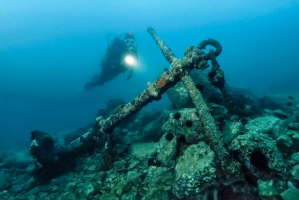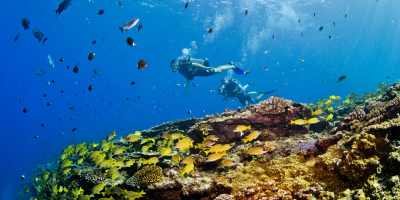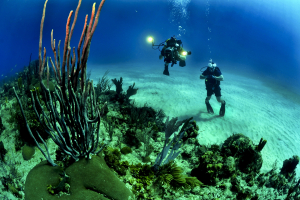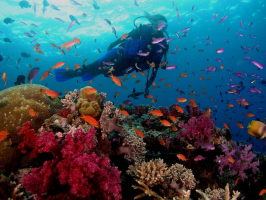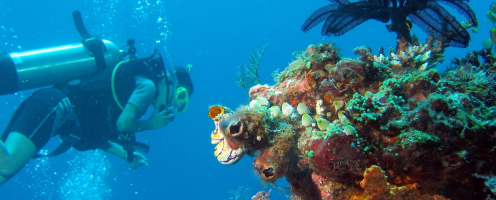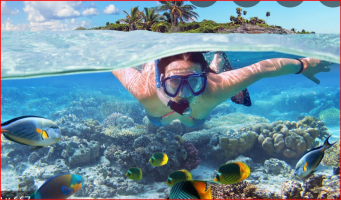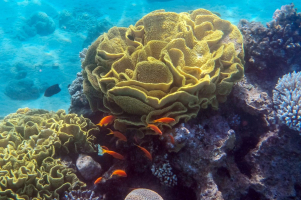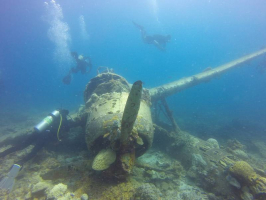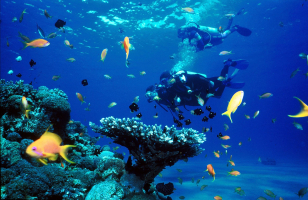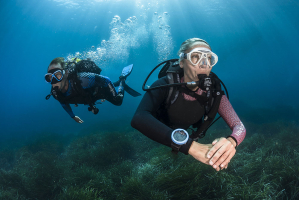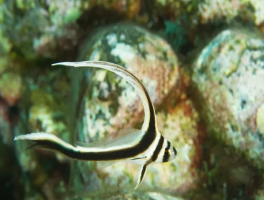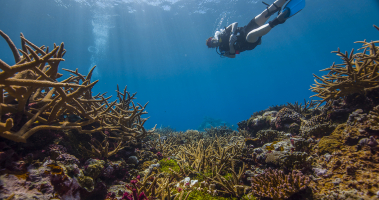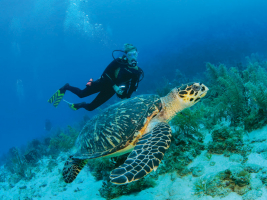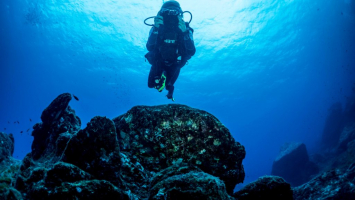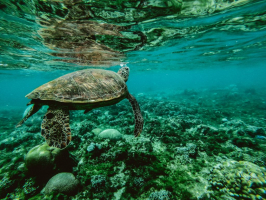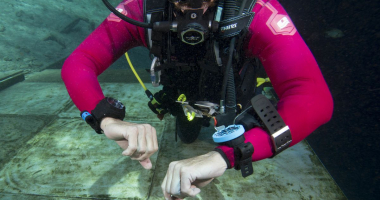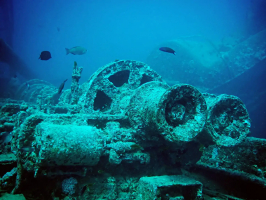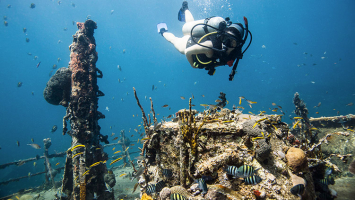Top 5 Best Diving Sites in Panama
Panama is an unique diving destination. In certain regions, it takes only 60 kilometers (37.5 miles) to go from the Caribbean to the Pacific, making it ... read more...possible to take a quick vacation and dive in both. The Caribbean side has wonderful beaches, many with waves, shallow coral reefs with soft and hard corals and gorgonians, lots of tube sponges, schools of tiny fish, dolphins, nurse sharks, and turtles, and shallow coral reefs with soft and hard corals and gorgonians, lots of tube sponges, and schools There are also large barrel sponges, brittle stars, crabs, shrimp, octopus, scorpionfish, and other macro creatures. Take a look at some of the best diving sites in Panama if you're planning a trip to this country.
-
In Boca del Toro Islands, there are several dive sites on pristine fringing reefs with a variety of soft corals, sponges, and gorgonians, as well as fantastic macro creatures including nudibranchs, arrow crabs, shrimps, lobster, and cowries. Reef and nurse sharks, eagle and manta rays, and large schools of snappers and jacks frequent the reef edges.
This is a utopia of crystal-clear water that lies beneath the surface. An old ship was sunk with the purpose of creating a reef and habitat for the biologically varied seas. There are so many dive sites that exploring them all would take months.There are dive places suited for scuba enthusiasts of all ability levels due to the numerous islands and various sights.
Christopher Columbus stopped at the Mouth of the Bull Islands on his last journey around 1502 while looking for a way to the Pacific Ocean. He was so taken with the islands' beauty that he named them after himself: Isla Colon, Isla Cristobal, and Bahia Almirante, all of which are still in use today. The Bastimentos Islands National Marine Park was established to conserve the natural ecosystem of the coast's marine life and reefs. In addition, it has been designated as a UNESCO World Heritage Site. Keep on reading to know more about the best diving sites in Panama.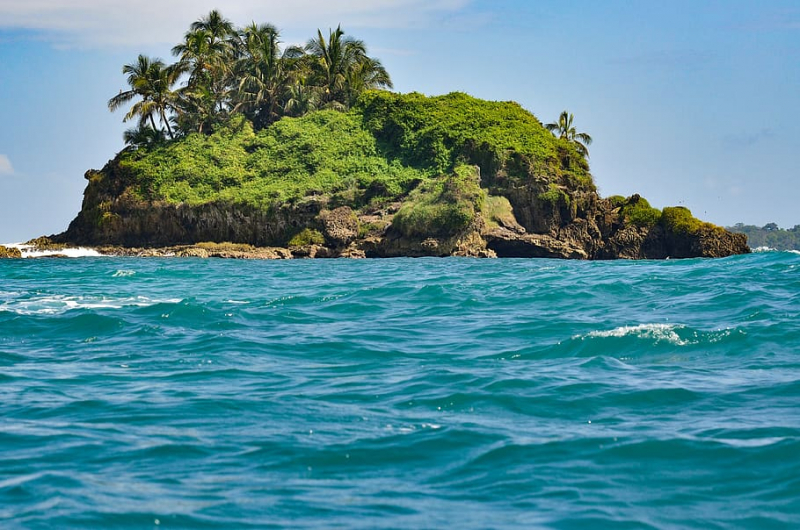
https://panamajack.com/ 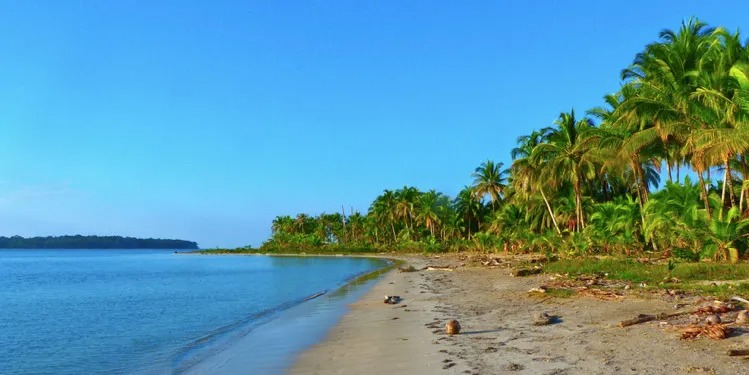
https://sanblas-islands.com/ -
Portobelo National Park is located in the southeast of the country, on the Caribbean side. Coral reefs cover thousands of square miles and are home to diverse underwater life. Moray eels, butterflyfish, damselfish, and trumpet fish, to name a few, are among the 50 coral varieties and over 250 fish species found within the reef. Because this national park is close to Panama City, the capital, visitors will head right to the ocean for a dive. The place is attractive because of the abundant marine life and several plane wreckage and shipwrecks to explore. The seas are incredibly pure, and the coral reefs are abundant.
Portobelo National Park has white sand beaches, clean water, lagoons, mangrove swamps, and abundant coral reefs near the Panama Canal.
After a day of diving and exploring the underwater world, there are lush mangrove forests and white sand beaches to relax on. From July to December, when visibility is optimum and the sea is calmer, is the best time to come.
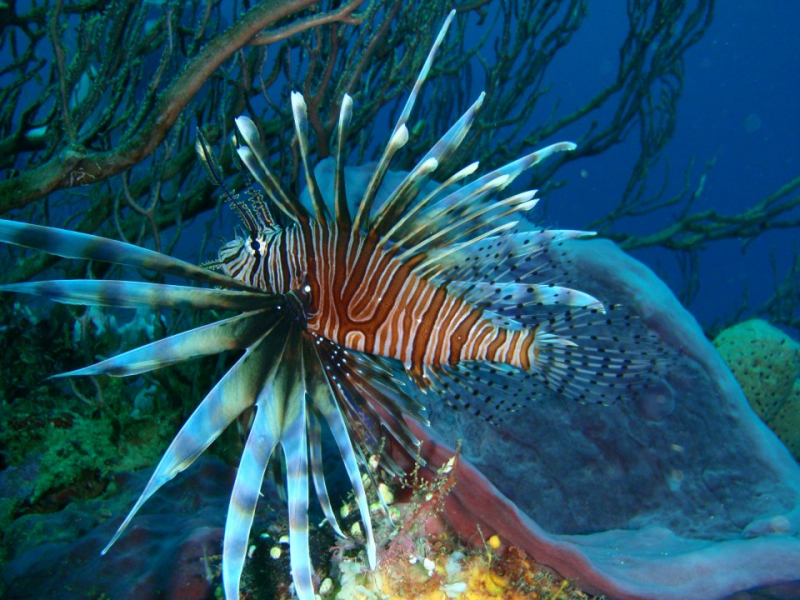
http://divescover.com/ 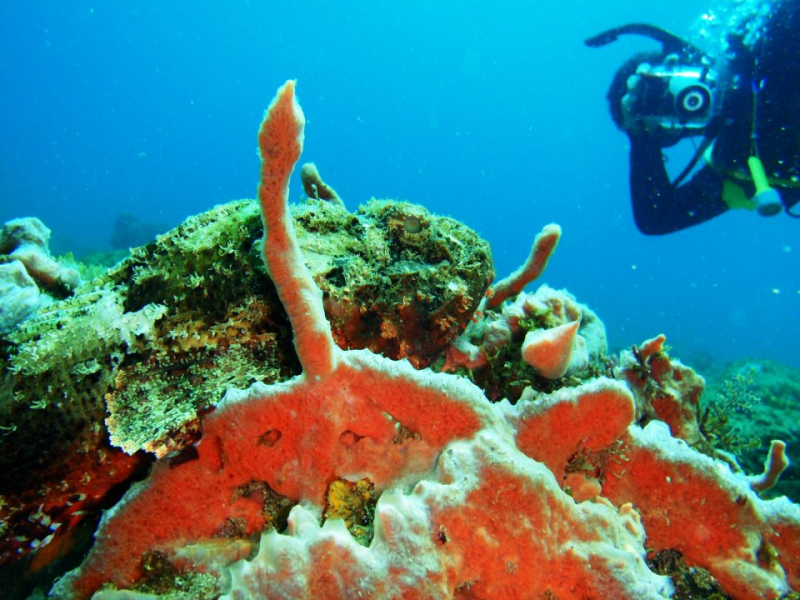
http://divescover.com/ -
The second and largest National Park on this list of the best diving sites in Panama, Coiba is a UNESCO World Heritage Site that consists of 38 islands and is one of Panama's diving spots. This means that this lovely ecology is protected on two levels. The Panamanian government and UNESCO safeguard it against overfishing and coral harvesting, and commercial boat traffic is kept to a minimal. Many people believe that the park has the best diving along the Pacific coast from Mexico to Columbia. Divers can see a wide variety of unusual marine species across the archipelago. Tiger, Bull, Hammerhead, and Black Tip Reef sharks prowl the waters and can be spotted on almost every dive.
The gentle gigantic Whale shark comes to visit throughout the winter months. Along with the Humpbacks, pods of Orcas and Pilot whales begin to migrate to the warm coastal waters in July. Wait until you see Manta and Mobula rays, sea turtles, and dolphins gliding around this underwater paradise if that is not enough for you. Coiba National Park is definitely one of the best diving sites in Panama.
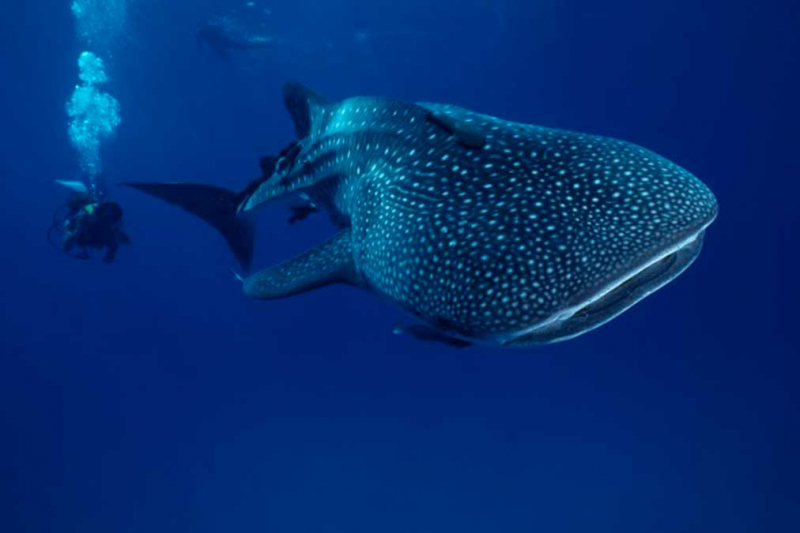
https://panamasportfishing.com/ 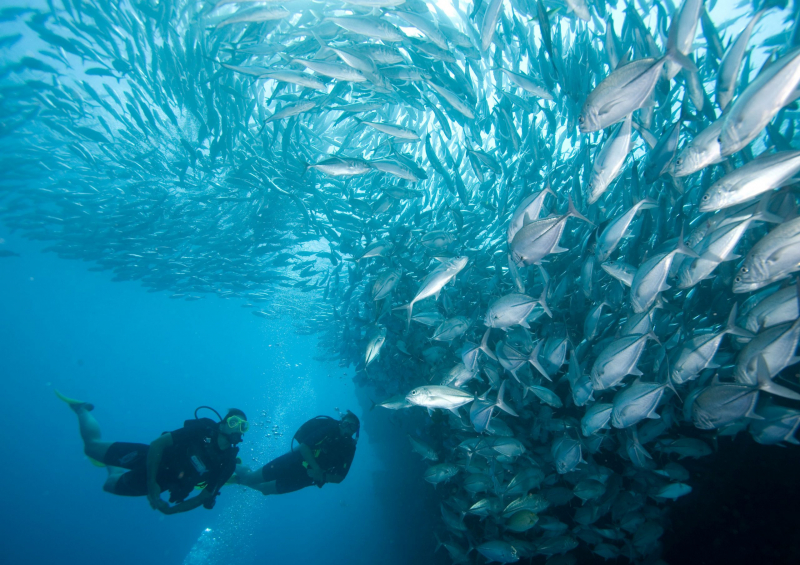
https://scubacoiba.com/ -
Archipelago de Las Perlas, located in the Gulf of Panama has roughly 90 islands, 130 islets, and cays, giving a diverse range of diving opportunities. The underwater landscape is varied, with fascinating rock formations and coral heads, as well as a variety of reef tropicals such as angelfish, parrotfish, and butterflyfish. Humpback whales are drawn in by strong currents and seasonal migrations. Because the majority of the islands are deserted, there are numerous beaches, shorelines, and shallow waters ideal for scuba diving. The Spanish Conquistadors named the islands from the abundance of pearls they discovered there. It is a diver's paradise on the Pacific side of Panama, in the Bay of Panama.
Diverse diving options abound, and several islands hide the waters from the ocean, making for a more relaxing dive. A dive site facing the ocean, on the other hand, will have rougher conditions; the ocean's currents will mix things up and create wonderful drift sites. On most days, you may dive into the clear water, don a mask, and watch schools of exotic fish and Manta rays swim by.
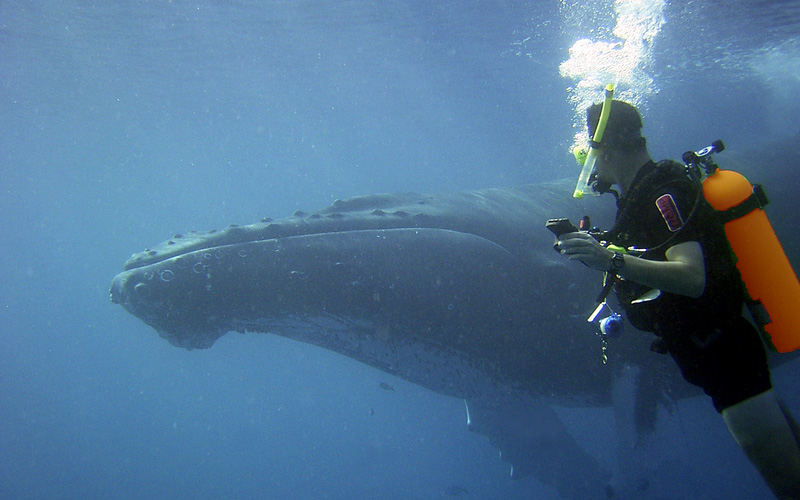
https://pearl-islands.com/ 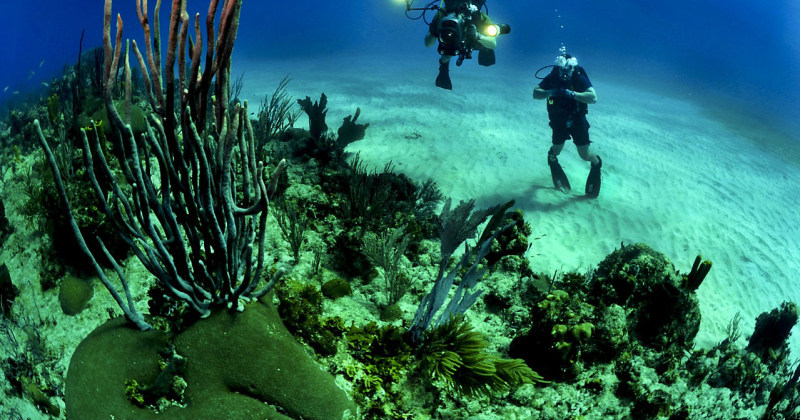
https://www.scubacontadora.com/ -
Gatun Lake is one of the best diving sites in Panama. It was created by damming the Chagres River during the construction of the canal. As the flood advanced, it swept away villages, construction equipment, machinery, and even a train. These are interesting for divers to explore as they swim with the tarpon, snook, and peacock bass that use the remnants as home, to the background sound of passing ships.
Under the vast lake, construction equipment, villages, railways, and houses all still exist and provide an interesting place to explore. The clarity is not as good as it is in the ocean because it is a freshwater lake, but there is still plenty to see. Many species of fish and marine life live in the underwater plant life. Large tankers navigate the lake on a daily basis, so be careful where you dive and keep out of any forbidden areas.It was the world's largest man-made lake when it was built in the early twentieth century. The Gatun Dam was built across the Chagres River during the construction of the Panama Canal. Everything behind the dam gradually submerged, and the lake was formed over several years.
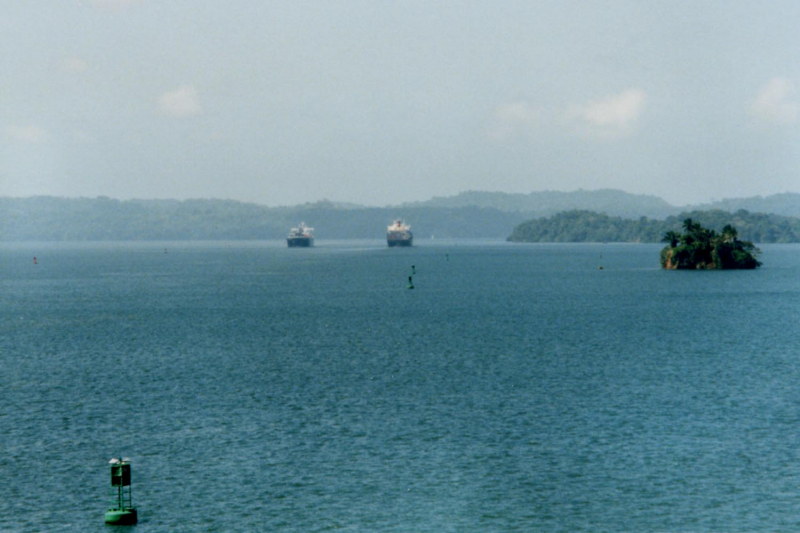
https://vi.m.wikipedia.org/wiki/T%E1%BA%ADp_tin:Gatun_Lake.jpg







